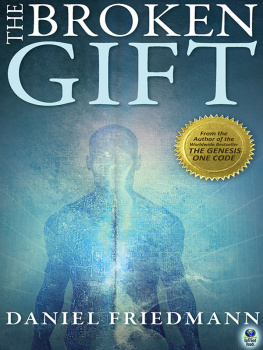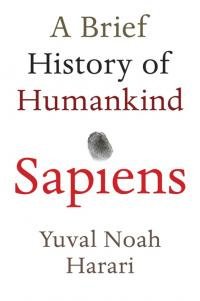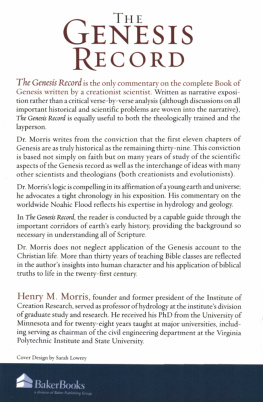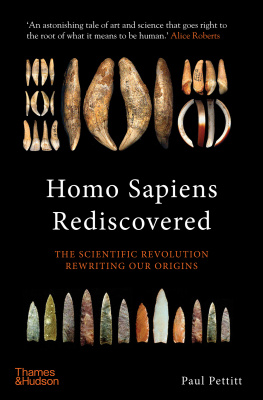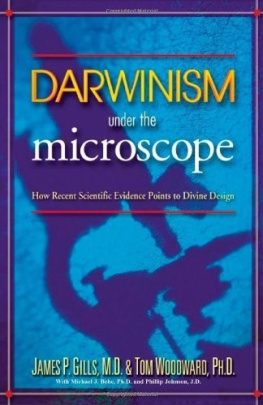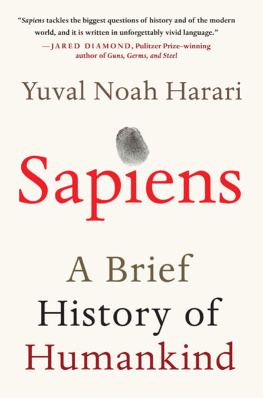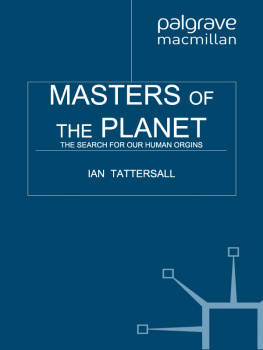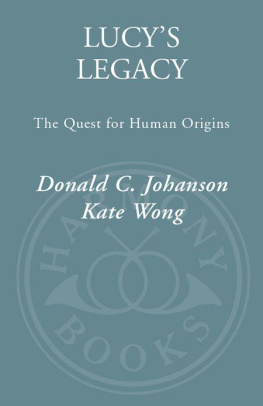The Broken Gift: Inspired Studies Book 2
By Daniel Friedmann
Copyright 2013 by Daniel Friedmann
Cover Copyright 2013 by Ginny Glass and Untreed Reads Publishing
The author is hereby established as the sole holder of the copyright. Either the publisher (Untreed Reads) or author may enforce copyrights to the fullest extent.
This ebook is licensed for your personal enjoyment only. This ebook may not be resold, reproduced or transmitted by any means in any form or given away to other people without specific permission from the author and/or publisher. If you would like to share this book with another person, please purchase an additional copy for each person you share it with. If youre reading this book and did not purchase it, or it was not purchased for your use only, then please return to your ebook retailer and purchase your own copy. Thank you for respecting the hard work of this author.
Also by Daniel Friedmann and Untreed Reads Publishing
The Genesis One Code: Inspired Studies Book 1
http://www.untreedreads.com
Other Books by Daniel Friedmann
The authors first book, The Genesis One Code, demonstrates an alignment between the dates of key events pertaining to the development of the universe and the appearance of life on earth as described in of Genesis, with those derived from scientific theory and observation. This book, The Broken Gift, follows and extends the scope of The Genesis One Code to include the appearance and early history of humans. Although the books stand alone and can be read in any order, reading them in the order of publication provides a comprehensive narrative starting at the beginning of the universe and proceeding until only a few thousand years ago, with all elements related from both a Biblical and scientific perspective.
The Broken Gift
Inspired Studies
Book 2
By Daniel Friedmann
Dedication
To Alexandra, Zach, Michael, and Jane, who ask deep questions and are not afraid to explore answers from diverse bodies of knowledge.
Contents
FIGURES
TABLES
Acknowledgements
Many people were instrumental in helping me with this work. My teachers of many years, Rabbi Avraham Feigelstock and Rabbi Shmuel Yeshayahu, introduced me to key concepts and helped me locate references.
Debra Christian provided critical editorial assistance.
Wendy Keyzer, Sol Pavony, Alan Robins and Dr. David C. Bossard provided valuable editorial comments, corrections and feedback.
I would like also to express my gratitude for the help and advice given me by my wife, Marilyn, who patiently edited, critiqued, and formatted the manuscript.
Ron V. May carefully edited the manuscript and made numerous excellent suggestions toward an essential contribution to the finished work.
Foreword
Are you educated in or otherwise well aware of the sciences and thus convinced that current scientific theories and data explain our origins? At the same time, do you have a basic awareness of Judeo-Christian scripture and its seeming incompatibility with science?
Conversely, do you believe that God created human beings and that all answers pertaining to our origins are clearly provided in scripture? At the same time, do you have a basic awareness of science and its seeming incompatibility with the teachings of your religion?
In other words, are you familiar with the main principles of both religion and science yet cannot reconcile the two to explain our origins?
At the start of this journey, I, too, was unsure whether or not the answers found in science books and religious scriptures could be reconciled. Now, having explored both in some depth, I can say that such reconciliation is not out of the question. This book attempts to demonstrate the reconciliation with respect to the appearance and early history of our species. But first, let me tell you about my background and potential biases.
I began with knowledge gained from a basic religious upbringing and a high school science education. To me, both bodies of knowledge were fascinating yet appeared incompatible. As I proceeded to obtain a scientific education, I initially came to think that science books answered everything. However, by my fourth year at university, some fundamental questions concerning human origins began to reappear. Simultaneously, in science texts some answers were not complete. So, I went back to study religion, this time also exploring the mystical component of religion so as to find deeper inner meaning rather than simple interpretation. Answers to my questions began to appear.
The Genesis creation narrative, for Christians and Jews, provides the foundation for an understanding of origins. For Muslims, too, it is an important component of the same understanding. While The Broken Gift is based primarily on the creation narrative, in order to delve deep into the subjects mysteries I relied on Jewish sources exclusively, since Judaism has formed the background of my religious education. Of those with different religious backgrounds, or none at all, I ask that you please continue to read on. You may find that the various sources pertaining to origins have more in common than perhaps expected. Certainly, such widely divergent narrativesthe divine creation of humankind in one day less than 6,000 years ago as revealed in religious texts, versus the appearance of our species 200,000 years ago as the culmination of numerous human-like species that existed over a span of millions of years as described in scientific textspresent a key challenge. They would seem incompatible, irreconcilable. I maintain they are not.
This book presents a rigorous analysis of key events and their dates related to the appearance and early history of our species as described in both Genesis and in the latest scientific publications. No attempt is made either to discredit or excuse any body of knowledge or any particular religious belief. On the contrary, the thesis of The Broken Gift is that both science texts and the Bible effectively describe human origins.
Nor is an attempt made to present why bodies of knowledge or beliefs are either compatible or incompatible by providing arguments that, although potentially powerful, cannot be proved conclusively. Instead, in The Broken Gift every attempt is made to reconcile religion-based events and their timing relating to the appearance and early history of our species with the same events as studied by scientists. When we put aside our personal beliefs and focus only on the events and their timing, we find alignmenta startling alignment. This book aims to elucidate that squaring of supposedly irreconcilable ways of knowing. My wish is that once you have glimpsed the possibilities, you then can ponder our origins with a newly reconciled set of storiesthe Biblical story, which is thousands of years old, and the scientific story, which is very new. Together, they depict the revelation of human existence itself in complementary rather than contradictory terms.
Chapter 1
Introduction
Imagine there exist manuscripts, written centuries ago, that could help us decipher the Biblical book of Genesis and thereby extract the key events and timeline recounting the appearance and early history of our species, Homo sapiens, precisely as identified by the latest scientific evidence derived from the fossil record and genetic studies.
Further, suppose these manuscripts could pinpoint the difference between modern humans, other living primates, and other extinct hominid lineages, as well as tell us when humans left Africa and when language developed as determined by ongoing scientific study.
Scientific work has shown that life emerged on earth some 3.5 billion years ago and is further theorized to have developed by a process of Darwinian natural selection, eventually evolving into the numerous species populating the earth today, including primates. Currently, evidence compiled through the scientific method has shown that Homo sapiens emerged in Africa some 200,000 years ago and remained there without significant change for more than 100,000 years. However, by 60,000 years ago Homo sapiens had developed a distinct set of modern behaviors and had left Africa to eventually spread throughout the world.
Next page
